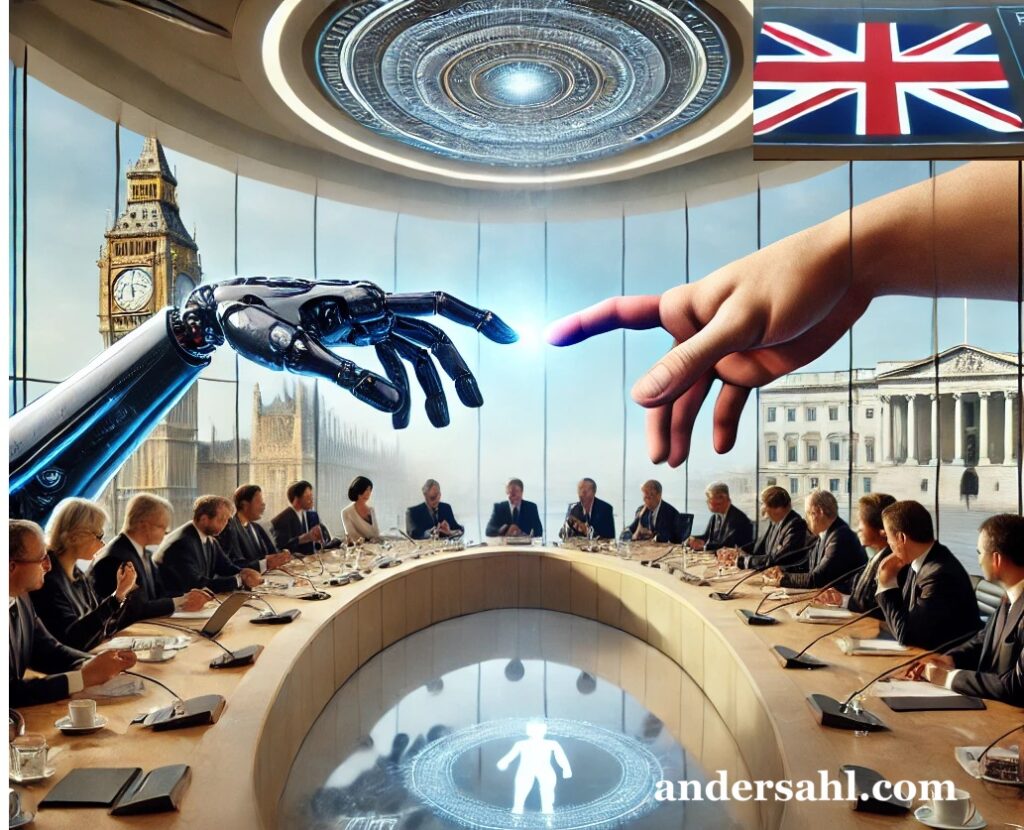By Anders K.S. Ahl
The First Life – Performing, Competing, and Seeking Approval
Not too long ago, in a fast-moving, high-performance world—one where leaders chase results, AI transforms industries, and the next innovation is always around the corner—a young nightingale was born
But unlike most birds, this nightingale didn’t hatch in its own nest. Instead, like all nightingales, its egg was placed in another bird’s nest, raised by foster parents who taught it how to survive. (Much like how AI models today are trained on vast amounts of copyrighted data, raised in an ecosystem not their own.)
It grew up fast.
It learned to fly, sing, and perform.
It followed the rules, met expectations, and measured its success by how much attention it received, how well it competed, and how others reacted.
For a while, that felt like enough.
But as time went on, despite its achievements and approval from others, something felt off.
One evening, while flying over a still lake, the nightingale caught its own reflection.
For the first time, it asked itself:
“Who am I really?”
The Search – Leaving Behind the Foster Parents
Unable to shake the feeling that something was missing, the nightingale left the familiar trees and its foster family behind.
For the first time, it migrated, as all nightingales eventually do—seeking something deeper, something truer.
Along the way, it encountered experienced birds, mentors and biological parents who had flown farther, seen more, and knew how the world worked.
These mentors and biological parents taught it new lessons:
✔ Success isn’t just about competition—it’s about alignment.
✔ The loudest voice isn’t always the wisest.
✔ Real leadership isn’t about proving yourself—it’s about creating impact.
For a while, the nightingale believed this was the answer.
It adjusted its song. It refined its flight. It tried to fit into the new mold of what “wisdom” looked like.
Yet still, something was missing.
Then one evening, while flying across vast lands toward its origins, the nightingale heard a new sound.
It wasn’t coming from the trees.
It wasn’t coming from the wind.
It wasn’t coming from the voices of mentors.It wasn’t coming from many of Musk’s world-famous and wide-spread tweets.
It wasn’t coming from Trump’s speeches, Rogan’s interviews, Peterson’s psychology lectures, or Max Tegmark’s AI warnings.
It wasn’t coming from Mark Zuckerberg’s metaverse vision or Sam Altman’s AI breakthroughs.
It wasn’t coming from Angela Merkel’s pragmatic leadership for global stability.
It wasn’t coming from Queen Silvia’s advocacy for children’s rights and human dignity.
It wasn’t coming from Queen Camilla’s admirable commitment to public service, literacy, and education.
It wasn’t coming from J.K. Rowling’s impact on global literacy and storytelling.
It wasn’t coming from Madonna’s reinvention of identity and fearless cultural leadership.
It wasn’t coming from Oprah Winfrey’s mastery of communication and entrepreneurship.
It wasn’t coming from Christina Stenbeck’s vision for digital transformation and investment strategy.
It wasn’t emerging from Benjamin Netanyahu’s sharp and strategic Artificial Intelligence initiatives aimed at fostering economic expansion for the state of Israel. It was coming from within.
The Second Life – Finding Your True Leadership Voice
The nightingale had arrived at its true home—the place where its real biological parents lived, the ones who created it.
For the first time, it understood the difference between its two lives.
✔ The first life? Being raised by foster parents, trained in performance, focused on external approval.
✔ The second life? Returning to its true nature, embracing its own song, defining its leadership from within.
In that moment, the first nightingale died—the one that had spent its life striving, proving, and performing.
And in that same instant, a second nightingale was born—one that simply was.
This nightingale no longer sought to out-sing others—it sought to create resonance.
It no longer flew to escape—it flew to lead.
It no longer looked outward for approval—it found its true voice and purpose.
And for the first time, its song felt whole.
The AI & Leadership Discussion – A Question for Every Leader
There’s a story about Mother Teresa, who once said:
“It is not a good idea to call your demonstration a war protest, even if you have the best intention of preventing war. Because you will feed war and fear. Instead, call it a peace demonstration, for then you will feed peace, love, and understanding.”
This applies to AI, leadership, and transformation today.
Should AI be treated as a risk to be controlled—or as a tool to elevate human potential?
Should leadership be about fear and control—or about wisdom, alignment, and vision?
Because when we focus on empowerment and transformation, security concerns solve themselves within a holistic strategy.
The Formula 1 Analogy – Are We Focused on the Right Thing?
Think of Formula 1—when designing a race car, do you focus primarily on safety? No. You optimize for winning.
✔ If you build for performance, safety is naturally integrated.
✔ If you only focus on fear-based safety measures, you never win.
If we keep saying “The wolf is coming” about AI, we risk creating a self-fulfilling prophecy of fear-based governance.
What if the real risk is not AI taking over—but AI being caged, either by our fear or by a lack of vision for its full potential?
What if we focused on AI as a force for knowledge, leadership, and human growth—rather than just productivity and security?
Because if we do not, we may not just put AI in a zoo—we may find ourselves inside one, guarded by it like the wolf of today in many countries. It flurished 100-200 years ago, but
it´s almost gone because someone started to shout “The wolf is coming”.
The Final Question: Which Formula 1 Car Will You Choose?
The AI era is not just about technology.
It’s about leadership.
So the real question is not:
📌 Which life will you choose?
It is this: Which Formula 1 car will you choose?
The one optimized for winning in the long run—or the one focused on security and finishing last?
Because the AI era is a race for wisdom, not just efficiency.
The right voices must rise.
What is your point of view and why?
















